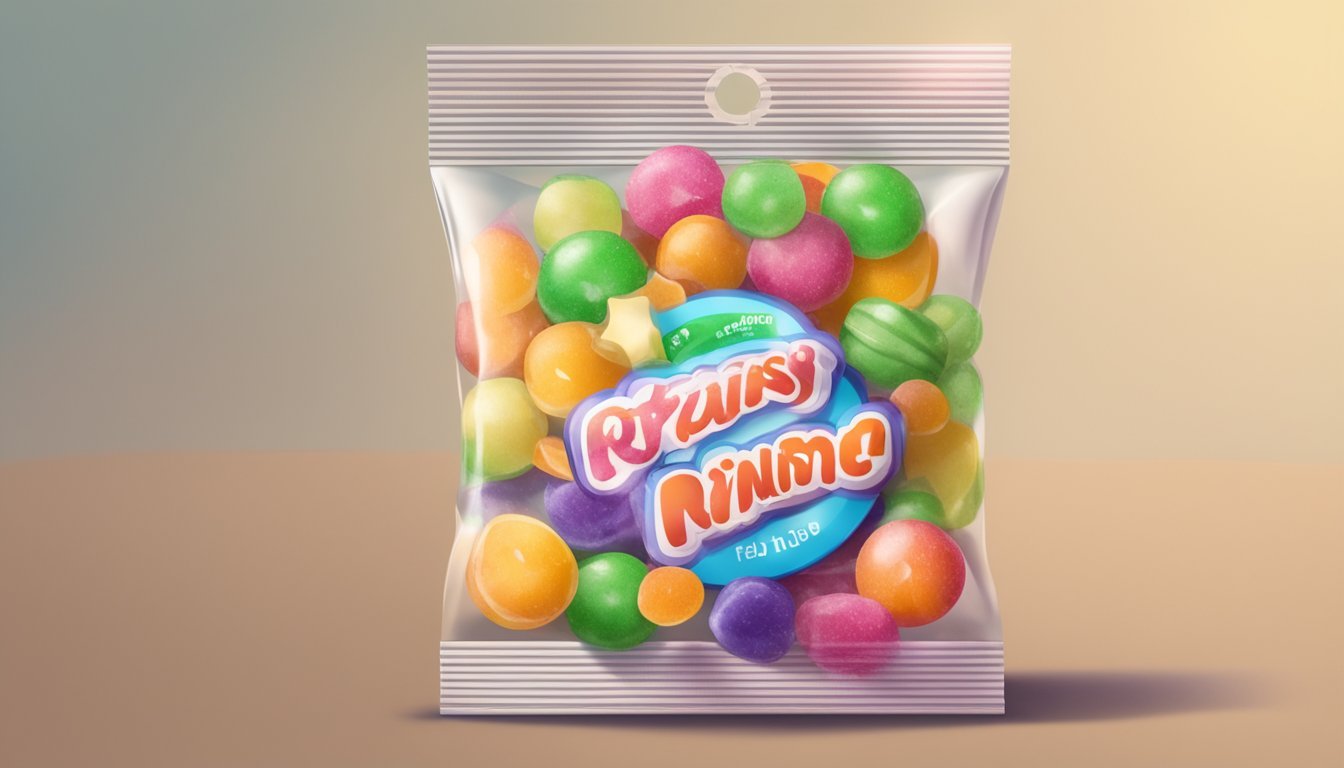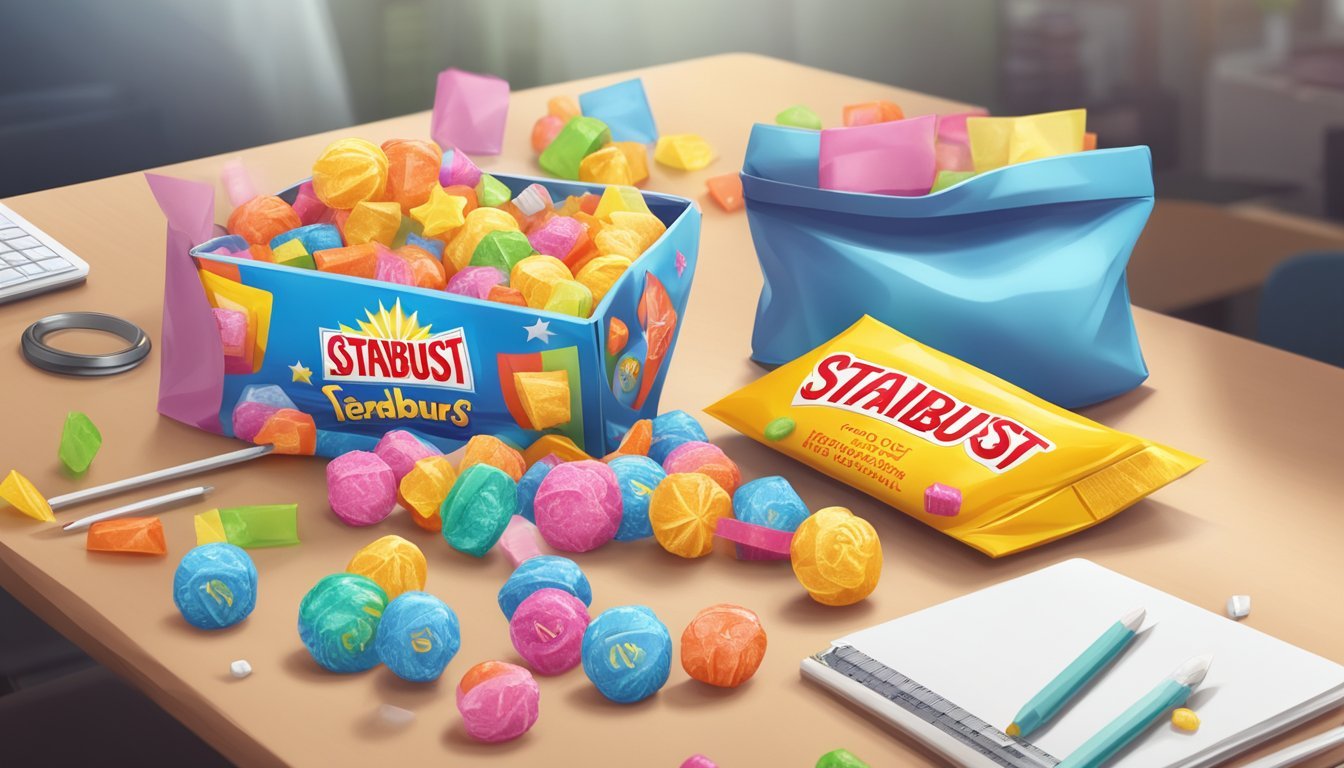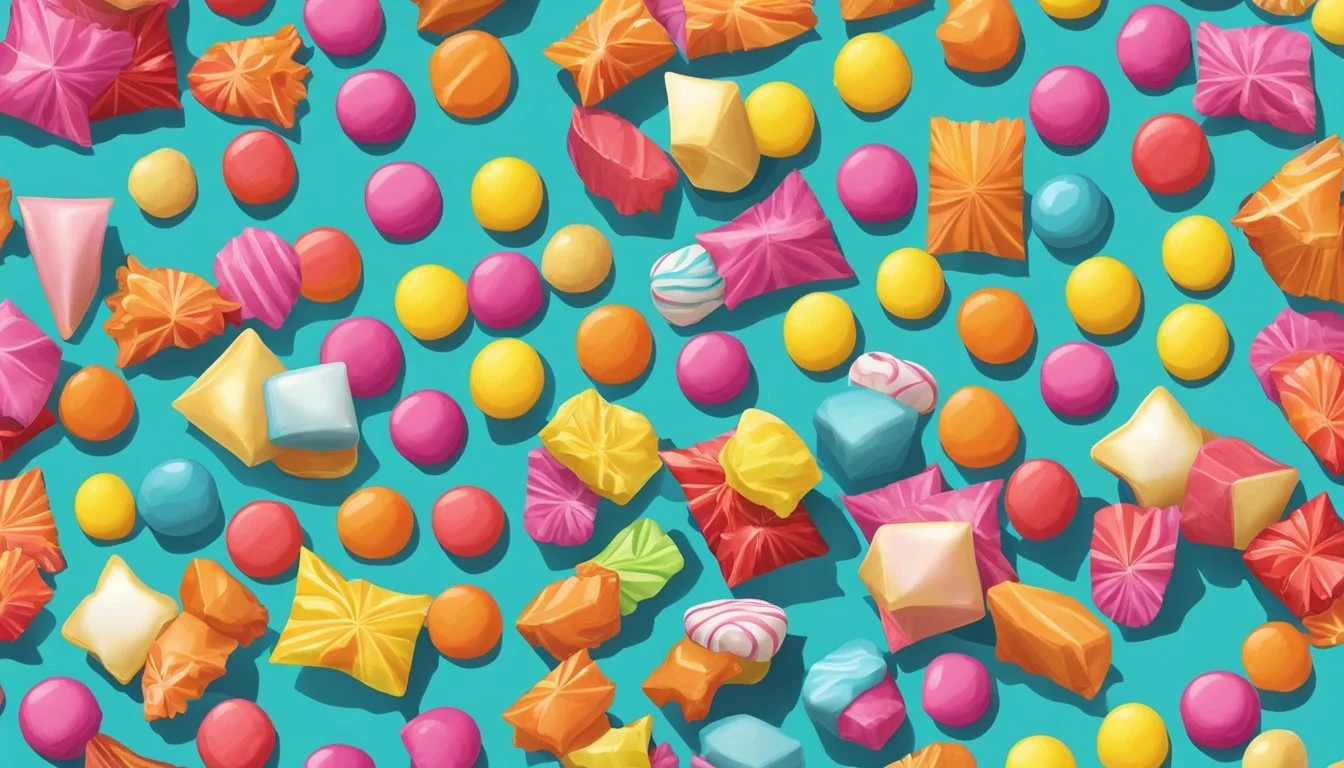How Long Does Starburst Last?
Unwrapping the Shelf Life Secrets
Starburst candy is a favorite treat for many, known for its chewy texture and vibrant fruit flavors. These individually wrapped candies are often a staple in candy dishes, party bags, and trick-or-treat buckets. Consumers frequently wonder about the lifespan of such candies and specifically how long Starbursts can last before they are considered unsuitable for consumption.
Generally, Starbursts maintain their quality for a considerable period, particularly when stored properly. While the candy does have a date of expiration provided by the manufacturer, this is often a conservative estimate of peak quality, not a firm cutoff for edibility. Proper storage is key, and under ideal conditions, unopened packages of Starbursts can retain their quality for months beyond the printed date. However, various external factors such as temperature, humidity, and packaging can affect both flavor and texture, potentially reducing their shelf life. Consumers should be aware that while candies like Starbursts do not spoil in the same way perishable foods do, they can still degrade over time and lose their appealing qualities.
Understanding Starburst
Starburst is a popular candy known for its chewy texture and variety of bright, fruity flavors. The primary ingredients in Starburst include sugar, corn syrup (how long does corn syrup last?), and hydrogenated palm kernel oil. These ingredients contribute to their sweet taste and distinct chewiness. Additionally, fruit juice from concentrate is used for natural flavors, alongside artificial flavors and colorings that vary depending on the type of Starburst.
The texture of Starburst is a significant aspect of their appeal. They are designed to be chewy without being too sticky, striking a balance that allows them to be enjoyed without creating a mess. However, texture can be affected by environmental factors such as temperature and humidity.
In terms of dietary restrictions, Starburst candy may not be suitable for everyone. Traditional Starburst in the US contains gelatin, which is derived from animals, making it unsuitable for vegan or vegetarian diets. However, some varieties of Starburst, like those sold in the UK, do not contain gelatin and are thus considered vegetarian.
Dietary Consideration Is Starburst Suitable? Vegan No (if contains gelatin) Vegetarian Depends on the region
Flavor-wise, Starburst offers an assortment of options in their various packs, with each individual chew wrapped in paper. Given that formulations can differ by region, it's important for consumers to check the packaging to understand the specific ingredients and to verify if the product aligns with their dietary preferences.
Shelf Life and Expiration
Starbursts are a popular candy known for their chewy texture and fruit flavors, but consumers often wonder about their longevity. This section focuses on determining the shelf life, understanding the significance of expiration dates, and recognizing changes in taste and quality over time.
Determining Shelf Life
The shelf life of Starbursts typically spans 1 to 2 years when stored under ideal conditions. These conditions include keeping the candies in a cool, dry place away from direct sunlight and heat sources. Exposure to unfavourable conditions can significantly reduce their shelf life.
Expiration Date Significance
A best-by date or expiration date on Starbursts isn't a hard-and-fast rule for safety but rather a manufacturer's guideline for optimal freshness. This date indicates when the candy may begin to lose its peak quality. However, the candies may still be consumed after this date if they have been stored correctly and show no signs of spoilage.
Changes in Taste and Quality
Over time, even within the bounds of their shelf life, Starbursts may experience changes in taste and texture:
Taste: The distinct fruity flavors may become less pronounced.
Texture: They may lose their signature chewiness and become harder.
These changes do not necessarily mean the candy is unsafe to eat, but they do mark a decline in the sensory qualities that consumers expect from the Starbursts brand.
Storage Recommendations
Proper storage of Starburst candy is essential in preserving its taste and extending its shelf life. By adhering to specific storage guidelines, one can ensure that Starburst candies remain consumable for longer periods.
Optimal Storage Conditions
For maintaining the freshness of Starburst, storing them in an airtight container in a cool, dry area is crucial. This environment mitigates the risk of moisture and other contaminants, which can compromise the quality of the candy.
Impacts of Temperature and Humidity
Temperature and humidity play significant roles in the longevity of Starburst candies. Exposure to high temperatures or increased humidity can result in a sticky texture and affect the flavor negatively. Therefore, a consistent, moderate temperature and low humidity level are advantageous for prolonging their shelf life.
Freezer vs. Pantry Storage
When considering freezer versus pantry storage, the pantry is generally recommended for Starburst. Keeping the candies at room temperature away from direct sunlight, preferably in the pantry, supports preservation without the risk of texture changes that might occur in the freezer. However, if one opts for freezer storage, it should be done so with caution to avoid any moisture buildup within the packaging.
Signs of Spoilage and Quality Deterioration
When assessing if Starburst candies have spoiled or quality has deteriorated, one should look for visual changes, alterations in texture and consistency, and any off smells. These signs indicate that the candy may no longer be at its best quality for consumption.
Visual Indicators of Spoilage
Visual examination of Starburst candies can reveal signs of spoilage. If there is any mold growth or discoloration, this suggests spoilage. Starburst candies should have vibrant and uniform colors; any dullness or color changes may indicate they are past their prime.
Texture and Consistency Changes
A fresh Starburst should be chewy and slightly soft. When they become stale, the texture often turns gritty or grainy and they can be excessively sticky, making them difficult to chew. This texture change can be particularly problematic and may lead to a risk of dental issues, especially for children.
Smell as an Indicator of Freshness
While Starbursts do not typically have a strong scent, any off-smell is a clear sign that they should not be consumed. A fresh Starburst should smell sweet and fruity; any deviation from this could indicate an off-flavor and that the candy is no longer fresh.
Health and Safety Considerations
When considering the consumption of expired Starbursts, it is crucial to balance the enjoyment of the candy with awareness of potential health risks. Ensuring the candy has not gone bad prior to consumption is a key safety step.
Risks of Eating Expired Starbursts
Expired Starbursts do not typically pose a high risk of foodborne illness, but they are not immune to quality degradation. As they age, the texture, color, and flavor can change, potentially leading to an unpleasant eating experience. Visual inspection should reveal if the candy has any discoloration, unusual odors, or a texture that seems off. If these signs are present, they may indicate the Starbursts are not suitable for consumption.
In terms of health and safety, consuming expired Starbursts is generally low risk; however, there is always the possibility of digestive discomfort if the candy's condition has notably deteriorated. This discomfort could manifest in mild symptoms similar to those of food poisoning or intolerance, particularly if someone has a sensitive digestive system. These symptoms should be taken seriously, as they indicate the body's response to the consumed product.
Food Poisoning Symptoms
Although rare from eating expired candy, symptoms of food poisoning can manifest if the product is contaminated. Symptoms include:
Nausea
Vomiting
Diarrhea
Abdominal cramps
Fever
Anyone experiencing these symptoms after consuming expired Starbursts should consider they might be caused by something other than the candy, such as another contaminated food product. Those with severe or persistent symptoms should seek medical attention. It is essential to maintain a focus on food safety by storing Starbursts in a cool, dry place and adhering to the best-before date when possible to reduce risks.
Comparison with Other Candies
When assessing the longevity of Starburst candies, it's insightful to compare them with other sweets in the market. Each type of candy has distinct ingredients and manufacturing processes that influence its shelf life.
Starburst vs. Similar Candies
Starburst candies are renowned for their chewy texture and fruit flavors. They are often compared with candies like Skittles (how long do skittles last?) and jelly beans, which share a similar target market. Here is a comparison:
Starburst: Typically last for 1-2 years when stored properly.
Skittles: Have a similar shelf life to Starburst, normally around 2-3 years.
Jelly Beans: These can also last up to 2 years if kept in the proper conditions.
Unlike chocolate, which can experience sugar blooms that give it a whitish, powdery appearance when exposed to temperature fluctuations, Starburst candies do not suffer from this due to their lack of dairy content.
Shelf Life of Competitive Products
Analyzing the shelf life of Starburst's competitors, such as Jolly Ranchers and taffy, provides consumers with options:
Jolly Ranchers: These hard candies can last even longer due to their low moisture content, with a typical lifespan of around 2-3 years.
Taffy: Similar to Starburst, taffy can hold for about 1-2 years when properly stored.
It's interesting to note that products marketed as healthy candies often have shorter shelf lives due to the absence of preservatives and the incorporation of natural ingredients.
Gum, although not directly comparable since it's not consumed as a candy, still bears mentioning for its longevity. Some gums can last indefinitely, though they are best consumed within 6-9 months for optimal flavor and texture.
Flavor Varieties and Influences
Starburst candies come in a variety of flavors that are grouped into different assortments such as Original and Tropical. The longevity of these flavors is influenced by the specific ingredients each type contains.
Original and Tropical Assortments
Original Starburst: The Original assortment typically includes the flavors strawberry, lemon, orange, and cherry. They are favorites among consumers for their bold, fruity taste and longevity.
Strawberry: Known for its sweet and slightly tart flavor profile which is consistent over time.
Lemon: Offers a vibrant, citrus tang that can diminish if exposed to moisture or heat over extended periods.
Orange: Characterized by a zesty and robust flavor which holds up well when stored properly.
Cherry: Has a distinctively strong and juicy flavor, which might lose some of its intensity past its peak.
Tropical Starburst: This variety includes exotic flavors such as watermelon, tropical punch, kiwi banana, and mango melon. Their shelf life could differ slightly from the Original due to different flavor additives used to achieve their tropical taste.
Watermelon: It tends to maintain its juicy flavor, reminiscent of the fruit, for a considerable duration if stored away from light and heat.
Mango Melon: A blend of mango and melon flavors that can sustain its tropical notes under optimal storage conditions.
Impacts of Ingredients on Flavor Longevity
The longevity of Starburst’s flavor can be affected by the composition of ingredients used in their production. The key factors are:
Sugar and Citric Acid: (how long does citric acid last?) Starbursts contain sugar and citric acid which are preservatives in themselves. These help retain the candy's flavor for an extended period.
Artificial Flavors: These components are responsible for the candy's taste. They can lose their potency over time, but generally, they help the candy retain its intended flavor profile for months.
Color Additives: While they primarily affect appearance, color additives can also have a minor impact on the perception of flavor, with changes occurring as the product ages.
Proper storage away from direct sunlight, heat, and moisture is essential to maintain the integrity of the flavors regardless of the variety.
Special Editions and Variations
Starburst candies are well-known for their regular fruit-chew lineup, but the brand occasionally extends to unique offerings. Special editions and variations cater to diverse taste preferences and often include limited-time flavors or unexpected combinations.
Chocolate-Covered Starburst
Starburst explored the confectionery crossover with chocolate by offering chocolate-covered Starburst. These special treats came in various chocolate options such as:
Dark Chocolate: Known for its rich and intense flavor, the dark chocolate variant provided a sophisticated taste contrast to the fruity chewiness of the Starburst center.
Milk Chocolate: A classic choice, milk chocolate added creamy sweetness that complemented the fruity Starburst.
White Chocolate: For those preferring a sweeter and creamier coating, white chocolate was a popular choice, enveloping the Starburst in a smooth, melt-in-your-mouth experience.
Fruit and Sour Mixes
Apart from the chocolate experimentation, Starburst also dived into the world of Fruit and Sour Mixes, balancing the sweetness with a tangy kick. These mixes included:
Sour Starburst: Featuring a lip-puckering sour coating over the traditional fruit flavors, these variations were designed for those seeking an invigorating zesty taste along with the classic Starburst chew.
In each of these special editions, Starburst strives to maintain the quality and flavor profile that fans expect, while simultaneously introducing innovative combinations to intrigue and satisfy varying customer preferences.
Frequently Asked Questions
This section addresses common queries about the lifespan of Starburst candies and how to deal with them approaching or surpassing their best-by date.
Extending Starburst Shelf Life
To maximize the shelf life of Starburst candies, they should be kept in a cool, dry environment away from direct sunlight. Proper storage can lead to them remaining consumable for 1-2 years from the production date. Hermetic sealing or airtight containers are recommended to avoid moisture, which can degrade the quality faster.
Ideal Storage Conditions:
Temperature: Room temperature or below
Environment: Dry, avoiding humidity
Light: Minimal exposure
Packaging: Sealed, airtight
Eating Starbursts Past Best-By Date
Starbursts do have a 'best-by' date, which indicates peak quality rather than safety. It is often safe to consume them up to 5 months after this date, provided they have been stored correctly and show no signs of spoilage. Expired candy may still be eaten, but one may notice a decline in taste or texture indicating staleness.
Considerations for Expired Candy:
Taste: May become less vibrant.
Texture: Could harden or become overly chewy.
Appearance: Look out for any discoloration.
Packaging Integrity: Ensure the original packaging has no leaks or tears.










